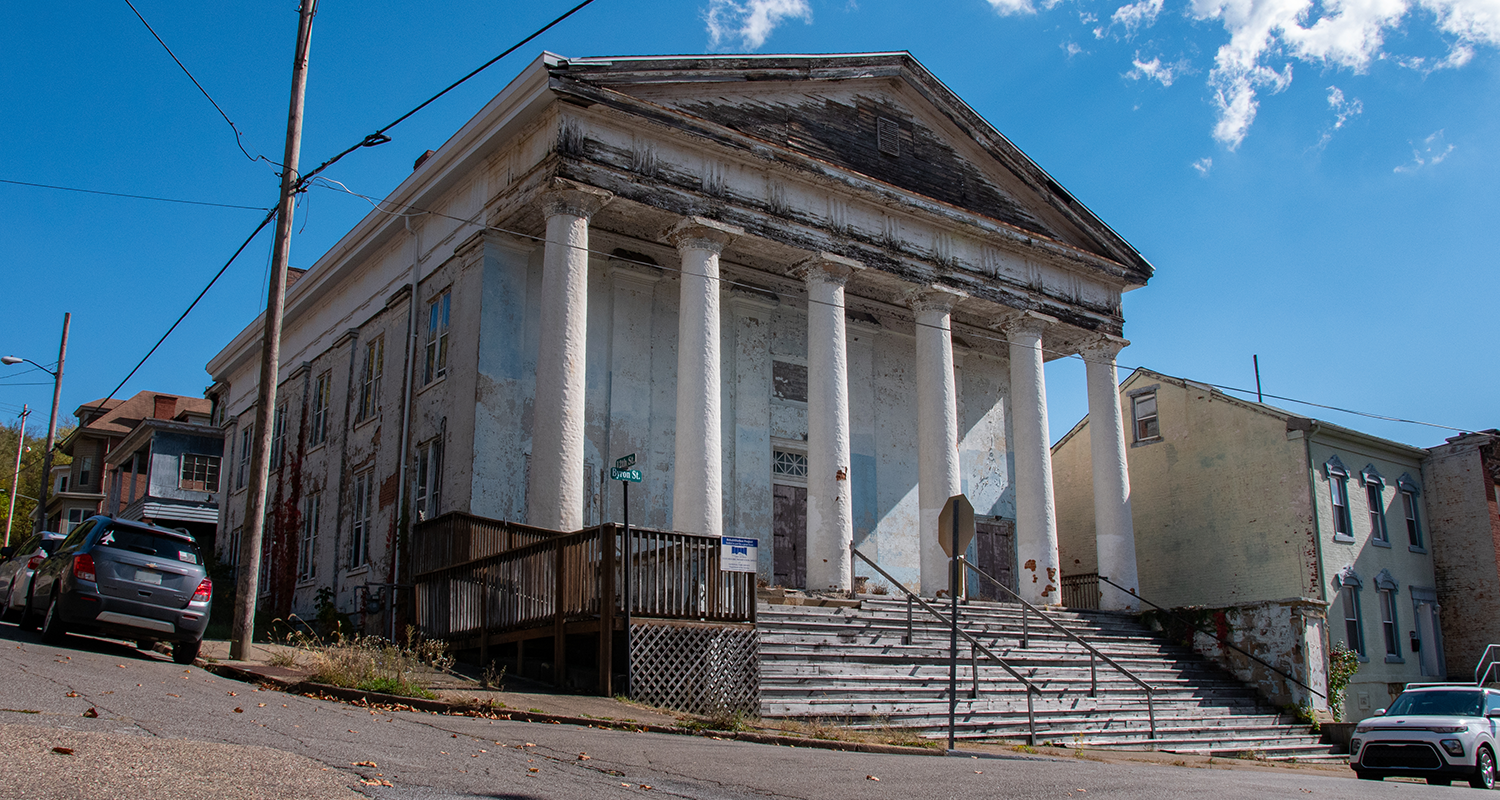You don’t have to spend much time in Wheeling before you begin to overhear stories about the “old days”. Mobsters, underground railroads, brothels, kingpins – you name it, Wheeling seemed to have it. However, there are some stories that, when you dig a little deeper, reveal more than you bargained for.
The Blue Church is a Greek Revival located on the Corner of Byron and 12th streets in the East Wheeling district. Completed in 1837, this impressive pre-civil war church remains one of Wheeling’s most beloved and bedeviling structures.
A fascinating and prevailing legend surrounding the Blue Church, formerly known as St. Matthews Episcopal, is that its former minister, Rev. John Armstrong, is said to have been buried beneath the front steps more than 100 years ago.

According to uncovered archives, Rev. Armstrong, “passed away while crossing the mountains on a fundraising trip meant to raise money to cover the debt of the building of the church.”
You may be thinking to yourself – “Why on earth would anyone want to investigate something so morbid?’’
And I would say to that – “no comment”
Needless to say, when I caught wind of the legend of the man so revered by his congregation they actually decided to lay to him to rest beneath the church steps – I had to dig.
Luckily, Wheeling is home to many talented gravediggers – metaphorically speaking that is.
According to the Ohio County Public Library archives:
“It was consecrated as St. Matthew’s Episcopal Church on October 27, 1837, by Bishop William Meade. When that congregation moved to its fourth home, the church was purchased by the First Baptist Church, whose members called it home for nearly 100 years. The building most recently was used by the Church of God and Saints of Christ.”
Today, this structure is referred to as the “Blue Church” because of its stuccoed sky blue facade.

One of the best examples of pre-Civil War Greek Revival architecture in Wheeling, the Blue Church is also one of the oldest church buildings anywhere in the city.
With this wealth of historical significance, there’s bound to be some intrigue.
I reached out to archives coordinator and MINI Cooper enthusiast, Erin Rothenbuehler at the Ohio County Public Library for more information.
Rothenbuehler discovered an article from The Intelligencer dating back to November 1st, 1866, describing the relocation of the church and potentially the body.
“At the building of the new church at the head of Monroe Street [12 St.], his remains were removed to it, and now rest beneath the chancel.” The Intelligencer (1866)
This new information was groundbreaking. Particularly because a chancel in architectural terminology describes the space around the altar. This information refutes the long-held belief that Rev. John Armstrong was buried beneath the steps while purporting that his final resting place is actually beneath the altar!
Another article from the Intelligencer in June of 1919 reaffirms this.
So, it seems that all signs point to yes! Rev. Armstrong is likely buried somewhere within the church – but where?
I dug once more for any additional information corroborating this finding but alas – none was uncovered.
While, we may never know the exact location of Rev. Armstrong’s remains, I will never forget the incredible beauty and mystique of the Blue Church herself.
And so, the legend lives.
• Rosemary Ketchum is a member of the Wheeling City Council representing Ward 3. Ketchum also serves as the Chief Facilitator of the public health coalition “Edible Mountain”. Rosemary’s work in community organizing and politics has been featured on TODAY, MSNBC, CBS, and CNN.



